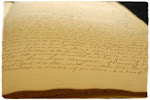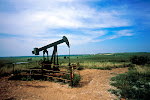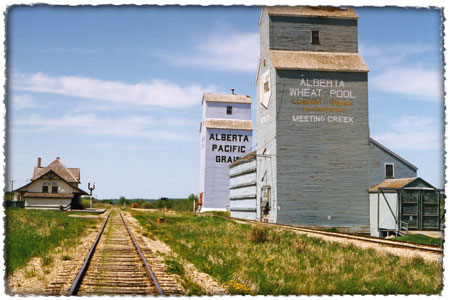 Do the people of Western Canada actually wish to be seen as ranchers? This is what made the west famous, farmers growing wheat and Ranchers herding cattle. There is no denying that this is a big part of prairie history and even today it is still remembered and cherished as the prairie way of life. We have tried to deny this before but perhaps it is inevitable that the prairies are famous and proud to be cowboys. The Calgary stampede continues to be a big part of their culture and everyone dresses up like cowboys and girls and watches races and wrangle bulls.
Do the people of Western Canada actually wish to be seen as ranchers? This is what made the west famous, farmers growing wheat and Ranchers herding cattle. There is no denying that this is a big part of prairie history and even today it is still remembered and cherished as the prairie way of life. We have tried to deny this before but perhaps it is inevitable that the prairies are famous and proud to be cowboys. The Calgary stampede continues to be a big part of their culture and everyone dresses up like cowboys and girls and watches races and wrangle bulls.The artwork of Charles M. Russell was proudly exhibited in Alberta’s biggest museum, proving that perhaps they are proud that this type of characteristic cowboy artwork is their culture. Charles Marion Russell was born in Missouri in
 1864, since he was a young boy he had always been captivated by Indians and cowboys, constantly reading books about them. Through his life he painted over 2000 painting of cowboys, Indians, and landscapes set in Western United States. In 2004 the Glenbow museum hosted an exhibit entitled “Capturing Western Legends: Russell and Remington’s Canadian Frontier”. It boasted that both artists created the iconic images of the West as they visited the northwest frontier at the turn of the century. However, at the turn of the century when times were starting to change and Canada was becoming its own nation was the acceptance and perseverance of his art more harm to our society and culture than a help? His works of art are stereotypical and were action shots of cowboys fighting Indians, Indians holding meetings, and wildlife and nature. However, they were beautiful paintings and perhaps a way to look at the past and see the Wild West’s roots. The fact that his art was celebrated almost 100 years after, shows that we still see the west as a wild free range on which cowboys still reign and Indians are not tame, but inferior. The Glenbow Museum is the largest in Alberta and houses a lot of famous paintings especially trying to focus on preserving Western culture.
1864, since he was a young boy he had always been captivated by Indians and cowboys, constantly reading books about them. Through his life he painted over 2000 painting of cowboys, Indians, and landscapes set in Western United States. In 2004 the Glenbow museum hosted an exhibit entitled “Capturing Western Legends: Russell and Remington’s Canadian Frontier”. It boasted that both artists created the iconic images of the West as they visited the northwest frontier at the turn of the century. However, at the turn of the century when times were starting to change and Canada was becoming its own nation was the acceptance and perseverance of his art more harm to our society and culture than a help? His works of art are stereotypical and were action shots of cowboys fighting Indians, Indians holding meetings, and wildlife and nature. However, they were beautiful paintings and perhaps a way to look at the past and see the Wild West’s roots. The fact that his art was celebrated almost 100 years after, shows that we still see the west as a wild free range on which cowboys still reign and Indians are not tame, but inferior. The Glenbow Museum is the largest in Alberta and houses a lot of famous paintings especially trying to focus on preserving Western culture.Seven years previous to this exhibit the museum also hosted an exhibit showing the “Canadian Cowboy”, it focused on three aspects of cowboys; the working cowboy, the performing cowboy and the imaginary cowboy. By tying these three types of cowboys together it symbolizes that those who are ranch hands on a farm in Alberta are no different than those who perform at the Calgary stampede or the image that we have of John Wayne and his many cowboy movies as an imagined cowboy/hero who always saves the day. Visitors to this exhibit were even invited to dress up in cowboy clothing and have their picture taken with a cowboy.
 Russell was definitely the kind of man who knew a real cowboy and tried to make his pictures depict that as much as he could. It doesn’t appear that he was as interested in the lighter side of cowboy ranching but took it seriously and seen them as real working men. He was very interested in them and what they did as is seen in Cowboys, Ranchers, and the Cattle Business:
Russell was definitely the kind of man who knew a real cowboy and tried to make his pictures depict that as much as he could. It doesn’t appear that he was as interested in the lighter side of cowboy ranching but took it seriously and seen them as real working men. He was very interested in them and what they did as is seen in Cowboys, Ranchers, and the Cattle Business: But the question is, was the museums idea to show him as a painter who knew what he was painting and to the best of his ability depicting the real life cowboys? If so, why was this exhibit held just a few years after the other one that showed the more Hollywood side of Cowboys?
But the question is, was the museums idea to show him as a painter who knew what he was painting and to the best of his ability depicting the real life cowboys? If so, why was this exhibit held just a few years after the other one that showed the more Hollywood side of Cowboys?





















No comments:
Post a Comment